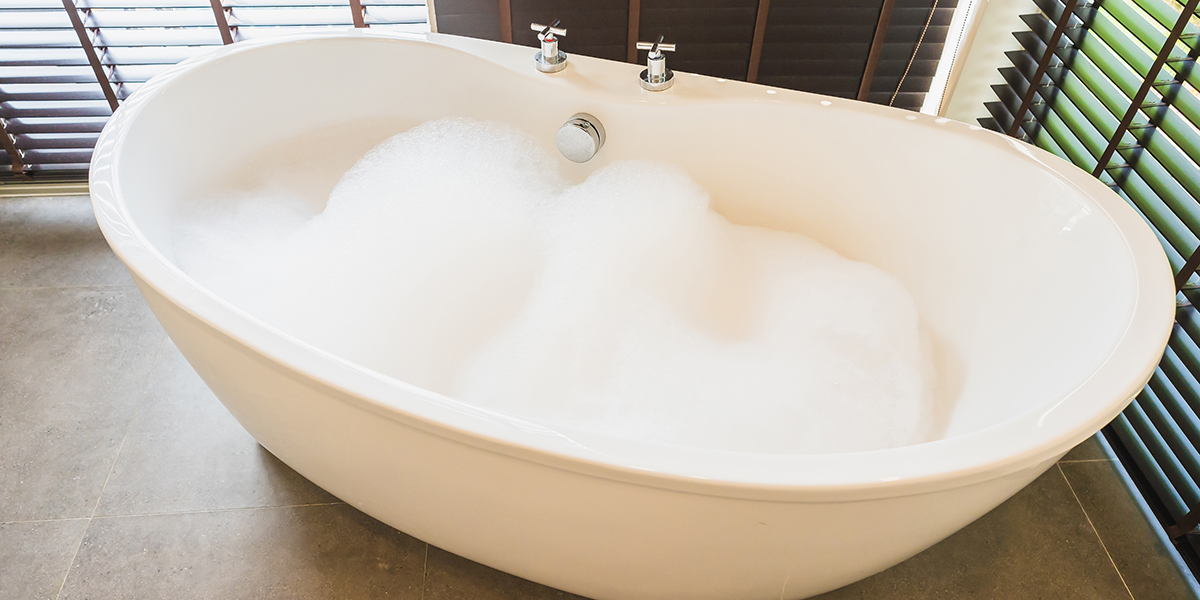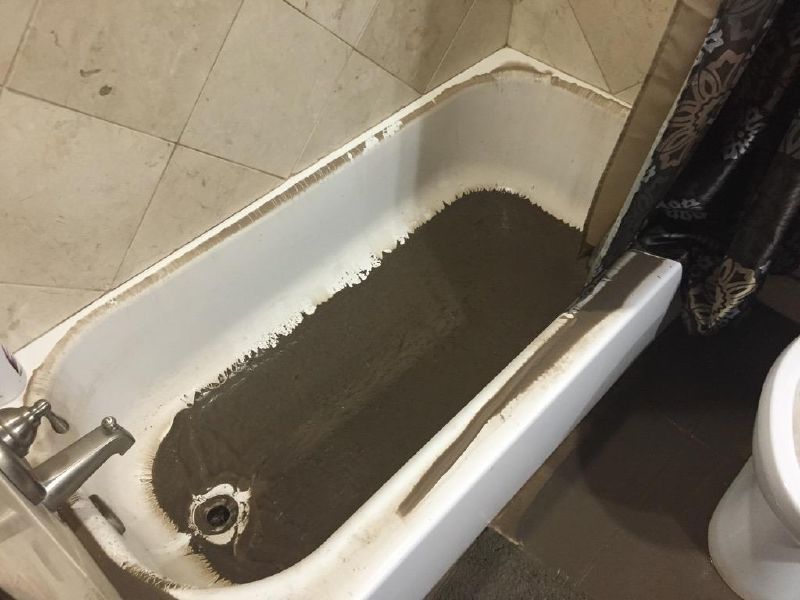Uncovering the Causes of Effluent Backflow in the Bathtub
Uncovering the Causes of Effluent Backflow in the Bathtub
Blog Article
Any individual has got their own individual rationale with regards to Why is There Sewage Coming Up Through the Bathtub.

Sewer back-up in the tub can be a distressing and unhygienic issue for any kind of homeowner. Not just is it bothersome, but it likewise poses significant health risks and suggests underlying problems with the plumbing system. Recognizing why sewer is showing up through the tub is important for taking appropriate action to resolve the issue properly.
Intro to the Concern
Typical Factors for Sewer Backup
Obstructions in the Sewage System Line
Among the most typical sources of sewer back-up is a blockage in the sewage system line. This can happen because of the accumulation of particles, grease, or international items in the pipelines, avoiding correct flow and causing sewage to support right into your bath tub.
Tree Origin Invasion
Tree origins seeking moisture and nutrients can penetrate sewer lines through tiny fractures or joints. With time, these roots can expand and broaden, triggering considerable damages to the pipes and causing sewage backup problems.
Comprehending the Problem
When sewage draws back up right into the bath tub, it's a clear sign of a problem with the drainage system. The wastewater that needs to be streaming far from your home is instead discovering its way back into your space, which can bring about considerable damage and carcinogen.
Prospective Causes
A number of elements can add to sewer back-up in the bathtub. From blockages in the drain line to problems with the plumbing facilities, determining the source is vital for finding an option.
Aging Facilities
Older homes may have dated plumbing systems that are more at risk to deterioration, cracks, and wear and tear. As pipes age, they become extra prone to leaks and obstructions, boosting the possibility of sewage backup incidents.
Heavy Rainfall or Flooding
During periods of heavy rainfall or flooding, the drain system might come to be overloaded with excess water, triggering back-ups and overflows. This can cause sewer supporting into bathtubs and other fixtures inside the home.
Indicators of Sewage Backup
Foul Odors
Unpleasant smells rising from drains pipes or components, specifically in the bathroom, might suggest sewage backup issues. These smells are commonly strong and consistent, signaling a problem that requires instant focus.
Slow Draining Fixtures
Bath tubs, sinks, and toilets that drain pipes slowly or otherwise in all could be experiencing sewage backup. If several fixtures are impacted simultaneously, it's likely that the issue stems from an usual point, such as the primary sewer line.
Gurgling Sounds
Weird gurgling or bubbling sounds coming from drains pipes when water is running somewhere else in your home are a measure of air caught in the plumbing system. This air buildup can result from sewer backup and ought to be investigated promptly.
Health And Wellness Threats Connected With Sewer Back-up
Contamination of Water Supply
Sewer backup can pollute the water system in your house, positioning a serious wellness danger to you and your family. Direct exposure to contaminated water can lead to intestinal issues, skin infections, and other ailments.
Mold Growth
Dampness from sewage back-up can create ideal conditions for mold and mildew development in your home. Mold and mildew spores can worsen breathing problems and trigger allergic reactions in delicate people, making punctual cleanup important.
Spread of Condition
Sewer consists of hazardous bacteria, viruses, and bloodsuckers that can cause a variety of diseases, consisting of liver disease, cholera, and gastroenteritis. Entering contact with sewage or contaminated surfaces puts you in danger of infection.
Tidying up After Sewer Back-up
Sanitation Procedures
Extensively decontaminate and sanitize influenced locations after sewer backup to remove hazardous bacteria and protect against mold and mildew growth. Usage suitable cleaning products and protective gear to guarantee safe and reliable cleaning.
Remediation of Affected Locations
Fix any damages to floor covering, walls, or components brought on by sewer backup. Depending on the level of the damage, you might need to replace carpets, drywall, or other materials to restore your home to its pre-loss condition.
Immediate Actions to Take
Turning Off Supply Of Water
In case of sewage backup, it's essential to turn off the supply of water to avoid more contamination and damages. Situate the main water shutoff valve in your house and closed it off up until the concern can be solved.
Calling an Expert Plumber
Dealing with sewage backup is not a DIY work. Get in touch with a qualified plumber with experience in taking care of sewage-related problems to assess the circumstance and carry out essential fixings or cleanups.
Preventing Contact with Infected Water
Till the sewer back-up is resolved, avoid contact with polluted water to stop the spread of microorganisms and virus. Use safety gear if you should be in the afflicted area and clean your hands completely later.
Preventive Measures
Normal Upkeep of Sewer Lines
Arrange normal evaluations and maintenance of your drain lines to determine and deal with possible problems before they escalate right into major problems. This can include clearing out particles, inspecting for tree root invasion, and fixing any damaged pipes.
Mounting Bayou Shutoffs
Consider setting up bayou valves in your plumbing system to stop sewage from receding right into your home throughout durations of heavy rainfall or flooding. These shutoffs instantly close when water draws back up, safeguarding your property from contamination.
Correct Disposal of House Waste
Avoid purging anything other than toilet paper and human waste down the toilet to avoid blockages and clogs in the drain line. Dispose of oil, oil, and other home chemicals correctly to minimize the danger of plumbing troubles.
Why Is Water Backing Up in My Bathtub When I Flush My Toilet?
What to do about a sewer line clog
First, don’t bother with plunging. No amount of plunging will dislodge the clog in a sewer line. The clog is too far away. Plungers are for clogs in the toilet itself, not the sewer line. Plus, the most likely causes of a sewer clog are:
Tree roots Flushed toys or feminine products Grease buildup Those items don’t move easily. And in the case of tree roots, the roots need to be cut out of the pipe and the pipe will need to be repaired.
You’ll need a closet auger. A closet auger is a type of plumber’s snake with a protective cover to keep from scratching the delicate porcelain toilet. If the clog is further down, you may need to remove the toilet or use one of your cleanouts to get to the clog.
We also recommend doing a video inspection of the drain to ensure that the cause of the clog has been completely removed. Otherwise, you could have the same problem again in a few days or weeks.
https://mspplumbingheatingair.com/blog/why-is-water-backing-up-in-my-bathtub-when-i-flush-my-toilet

Do you really like reading about Why is There Sewage Coming Up Through the Bathtub? Post a review directly below. We'd be delighted to know your insights about this blog post. We are looking forward to see you back again in the future. Are you aware of anybody else who is involved in the niche? Why not promote it. Thanks for taking the time to read it.
Click Here
Report this page